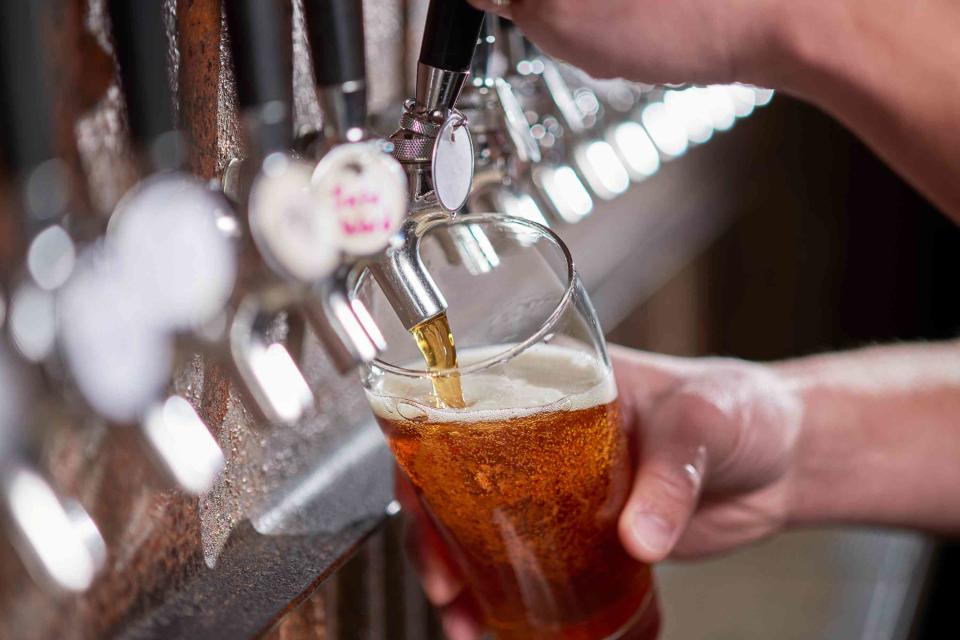Do You Know the Difference Between Pilsners and Lagers?
The relationship between Pilsners and lagers is surprisingly similar to that of Chardonnays and white wine.

Getty
Lagers are the most popular beers in the world, and for good reason. Their crisp drinkability and generally low alcohol volume make them ideal for practically any occasion, but there’s much more to them than approachability.
Lagers, like ales, are categories of beer, differentiated by fermentation temperatures and yeast strains, with plenty of styles that fall under each. Popular lager styles include American light lagers like Bud Light, Mexican lagers like Modelo, Märzens (similar to Oktoberfest beers), and Pilsners, which originate from Pilsen, a town in the Bohemia region of the Czech Republic. One of the most famous examples of a classic pilsner is Pilsner Urquell, which has been brewed since 1842 by the Pilsner Urquell Brewery.
Related: 7 Beer Cocktails You Can Make in Minutes
Pilsners themselves have a few different subcategories, such as German, Italian, Australian and New Zealand, and Mexican, but all are generally light yellow to gold, around 5% alcohol-by-volume (ABV), and use Pilsner malts to give the brews a signature grainy and lightly sweet flavor with a bubbly, dry finish and low bitterness. Most Pilsners tend to have a slightly more robust — but still crisp — mouthfeel and hop bitterness than other light lagers. Pilsner malts are sometimes used in other styles, such as Czech dark lagers, but more to harmonize alongside other malts rather than act as the sole player. In short, all Pilsners are lagers, but not all lagers are Pilsners.
Still unsure about what makes a pilsner different from a lager? Think of it in wine terms. All Chardonnays are white wines, but not all white wines are Chardonnays. But if you like Chardonnay, there’s a chance you’ll like other white wines in the same realm, such as Viognier, Pinot Grigio, or Chenin Blanc. If you enjoy Pilsners, you may enjoy other lagers such as Munich Helles, Czech amber lagers, or German bocks.
Related: How to Tell the Difference Between Ale and Lager
Despite the longer fermentation time it takes for lagers to fully attenuate, craft breweries across the U.S. are brewing Pilsners on par with some of the most celebrated European breweries. Firestone Walker Brewing Company in Paso Robles, California has brewed Pivo Pils since 2013, where it’s remained a core beer ever since. pFriem Family Brewers in Hood River, Oregon goes even further, brewing Belgian, Italian, North German, classic Czech and even a West Coast take on the style.
West Coast Pilsners are relatively new, with breweries like Highland Park, North Park Beer Company, and SteepleJack Brewing trying their hand at the slightly hoppier (it is a “West Coast” style, after all), but still refreshing taste that falls somewhere between a Pilsner and IPA — basically, it’s Lager2.0. Whatever it is, it’s delicious, and Pilsners in all forms are here to stay.
For more Food & Wine news, make sure to sign up for our newsletter!
Read the original article on Food & Wine.

